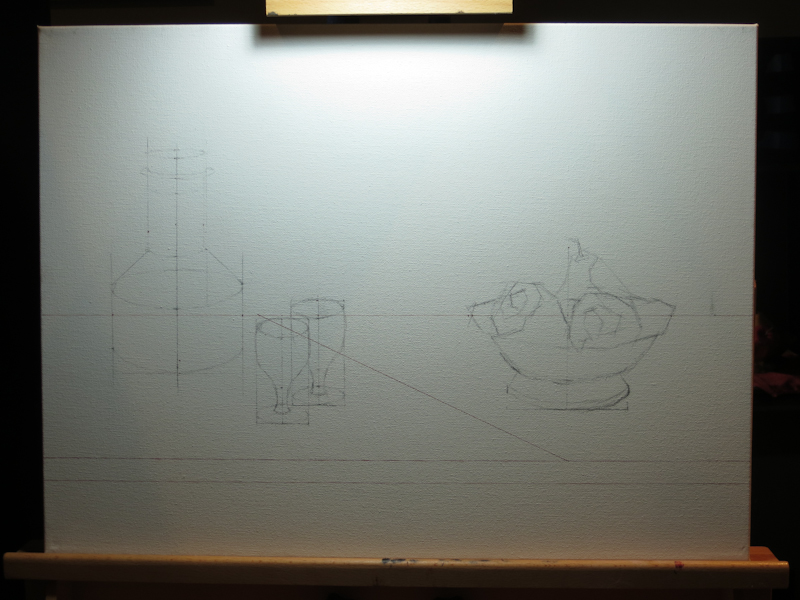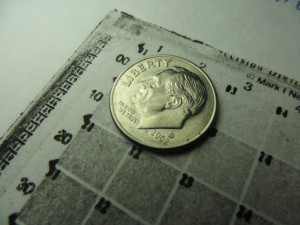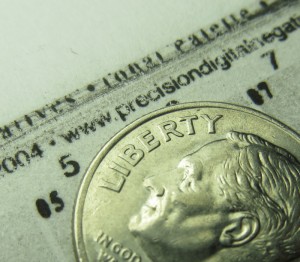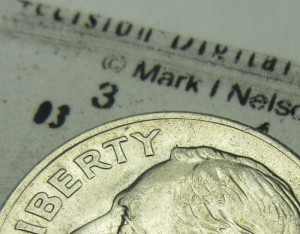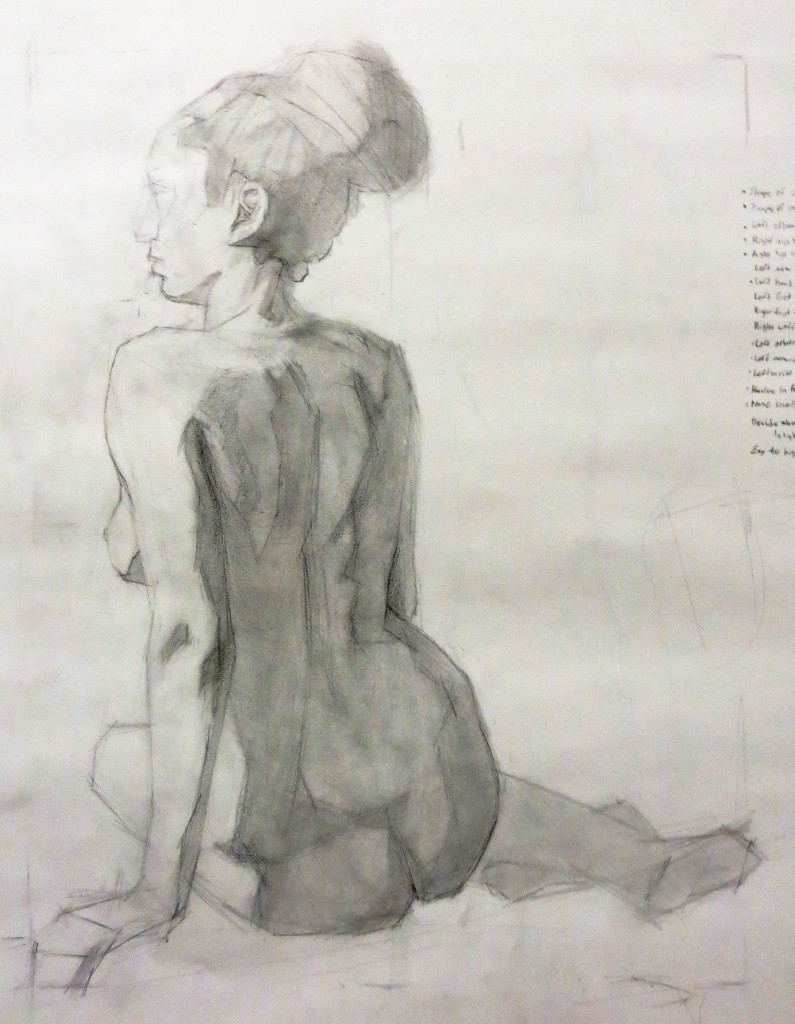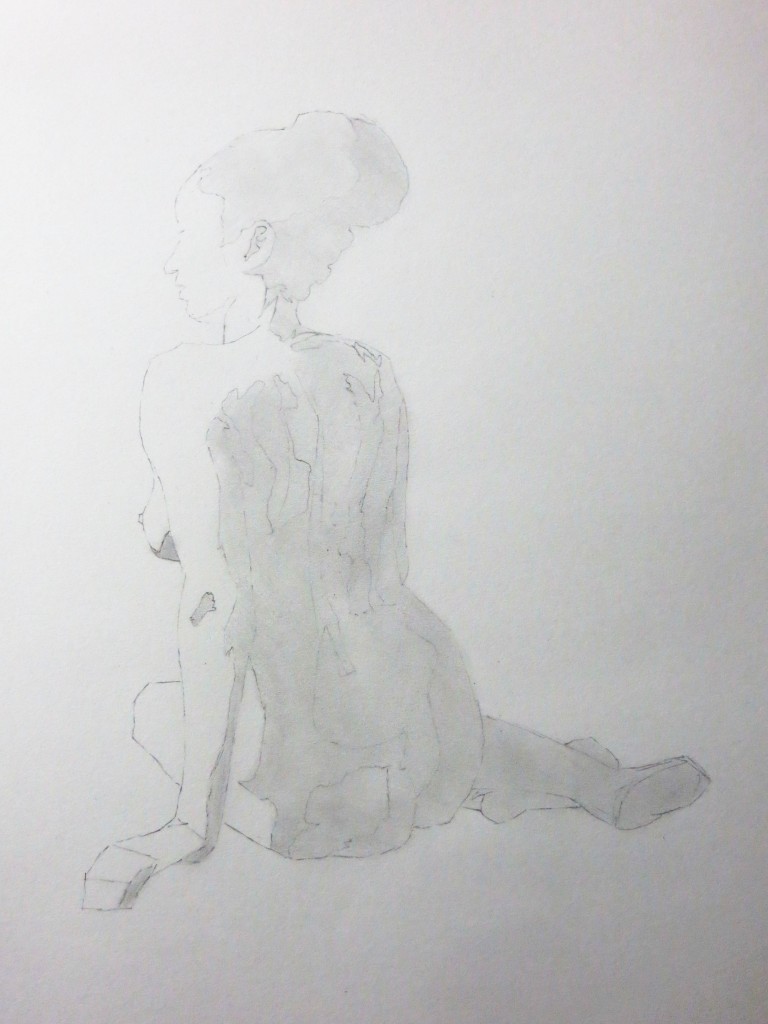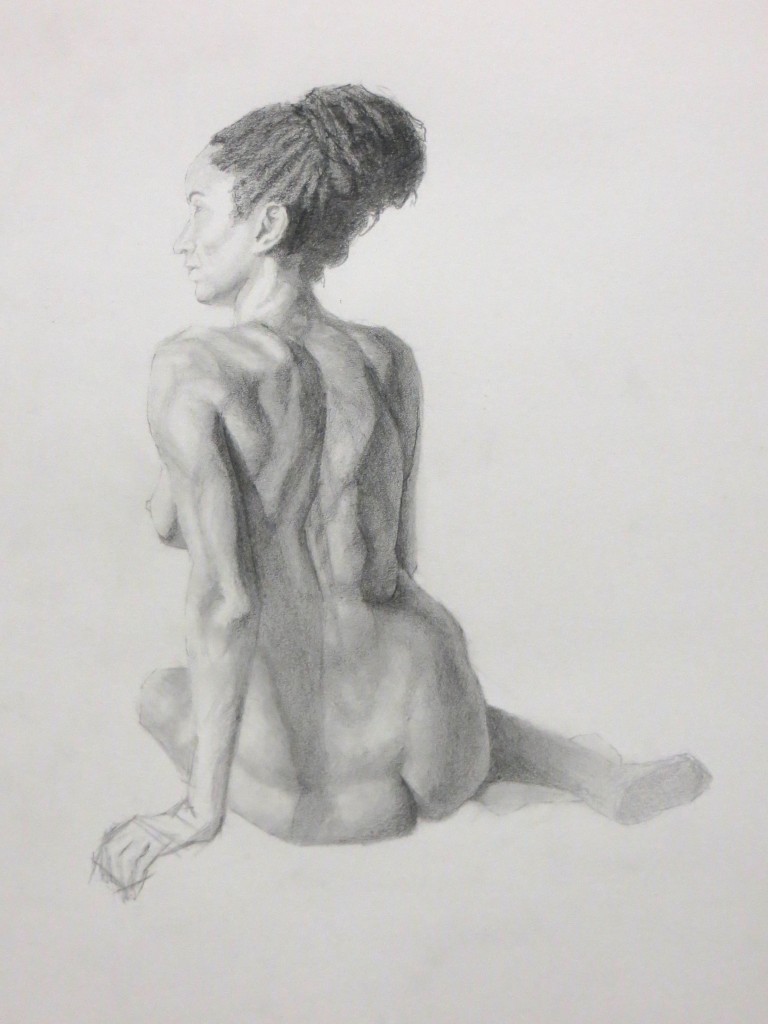Made a bit of progress on my still life over the weekend. After finishing the color study, I did an 18″x24″ sketch in graphite to figure out the composition and the aspect ratios of the various ellipses. I tried a number of scales and small adjustments in item placement before settling on this design.
I redrew my design on my canvas using an Indian Red ink pen for the horizontals in the tabletop and the strong diagonal. My plan is to do an under painting in burnt sienna, so I’m hoping the inked lines will mostly disappear into the paint. The remaining items were sketched in vine charcoal. I didn’t use a fixative and am expecting the charcoal to fall away as I find the exact edges in paint.
Originally my plan was to do all the drawing with a paintbrush directly on the canvas, but I had so much fun with graphite compositional study that I just continued on the canvas. I still expect that I will make significant adjustments with the brush in the under painting.


